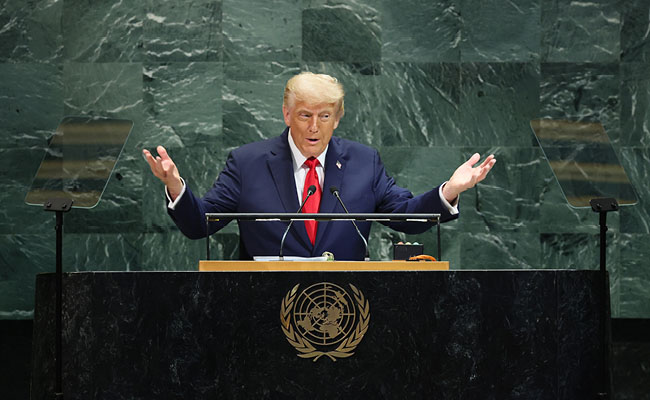How excited should we be about last week’s medium-term budget, where finance minister Enoch Godongwana grasped the 3% inflation target baton passed by the South African Reserve Bank and still managed to chart a path that will deliver debt stabilisation in the current fiscal year?
The move, which brings the Treasury into lockstep with the Bank, has the potential to set in motion a virtuous cycle of lower inflation and borrowing costs, leading to higher confidence and investment, stronger public finances and, ultimately, faster growth.
“It is a fiscal turnaround, and a new era of monetary policy dynamism, and the dovetailing of the two is a beautiful thing,” says Citibank economist Gina Schoeman.
“I don’t want to drink the Kool-Aid, but when you see structural things and buffers being put in place it helps to inform a more realistic, constructive view.”
By “structural things” she means that in addition to officially announcing the 3% inflation target, the Treasury is also on track to post its third annual primary surplus (revenue minus non-interest expenditure) and to get debt to stabilise at 77.9% in the current fiscal year.
Moreover, the Treasury also succeeded in getting South Africa removed from the Financial Action Task Force’s greylist in October, while Godongwana seems set to introduce a formal fiscal anchor, possibly as early as the February 2026 budget.
Keeping the ball rolling, S&P Global Ratings upgraded South Africa’s credit ratings just days after the medium-term budget, citing the country’s improving growth and fiscal trajectory as structural reforms continue to gain traction. (The foreign currency rating was lifted from BB- to BB, and the local currency rating from BB to BB+.)
Importantly, S&P also maintained a positive outlook on South Africa’s ratings. It marks the first upgrade for the country by any of the major credit ratings agencies in more than 16 years.
Though, at two notches deep into junk territory, South Africa’s return to an investment-grading rating is some way off, “this upgrade is a meaningful shift in the country’s macro narrative and adds to what has now become a clear upward streak”, says Momentum economist Sanisha Packirisamy.
If Schoeman represents the constructive camp, then someone like Michael Sachs, a former head of the National Treasury’s budget office, represents the cold-water camp by providing a chilly dose of scepticism to dampen such enthusiasm.
While Sachs is reluctant to pass judgment on the medium-term budget policy statement (MTBPS), he set out the case for scepticism in a presentation just a few weeks prior to it and says nothing since has changed his mind.
In the cold-water camp’s view South Africa is currently in a sweet spot: a global economic crisis has been avoided, prompting a relief rally and spurring on rand appreciation, lower domestic bond yields and a lower inflation rate.
But these things are not really of South Africa’s own making. Specifically, they are not the result of the Treasury having done any of the heavy lifting on the policy side; the path of expenditure is just as uncertain as it was a week ago. This means the budget still suffers from significant execution risk.
For instance, the rand being stronger and inflation being lower, though this might provide some relief, isn’t going to fix the ongoing underfunding problem in health and education, or the financial crisis in local government. As such, a healthy dose of scepticism over the debt-stabilisation path laid out in the MTBPS is warranted.
Policy reform or bust
In the constructive camp’s view South Africa has played a key part in achieving the structural move lower in bond yields, both by the Bank having announced its preference for a 3% inflation target and by the Treasury having made its obsession with achieving debt stabilisation crystal clear. A stable, more cohesive government of national unity (GNU), which is united behind the MTBPS, is also helping.
“As the Treasury, they’ve worked very hard against the Eskom cycle, the global cycle, and the political cycle,” says Schoeman. “They’ve been up against more adversity than they have benefited from lucky tailwinds.”
Her sense is that the Treasury is so committed to achieving its fiscal targets that it will do so irrespective of what happens to growth and politics. And since there is no real room on the tax side, this suggests that the Treasury could push down harder on the expenditure side and do more to achieve greater spending efficiency and savings if necessary to hold the fiscal line.
Based on the preparatory work under way, it also seems likely that from 2026/27, the Treasury’s job could be made easier by the introduction of a fiscal rule, which would likely legislatively bind the GNU to a prescribed fiscal framework (as opposed to just setting numeric point targets). This would make it much harder for the government to spring costly new policies onto the expenditure side of the budget.
In short, the constructive camp believes South Africa is at the start of a sustained turnaround in which the country could quite credibly achieve a 3% inflation target and a 3% main budget deficit target within the next three years. This could provide the basis for lower interest rates, faster real GDP growth and successive credit ratings upgrades.
By contrast, the sceptics think there is very little chance that the Treasury will be able to slow the pace of consolidated public expenditure to just 0.2% real growth on average over the medium term as required by the MTBPS.
It means that government consumption will have to be curbed from 2.4% real growth in 2026 to 0% in 2027, which seems implausible, since the government hasn’t yet tackled any of the hard trade-offs that would give us the confidence to believe that it will achieve these numbers.
For instance, there is no clarity in the MTBPS on the long-term shape or size of the social relief of distress grant, which has been extended for just one more year, or on the fate of the flagship presidential employment stimulus programme, which is supposed to be massively expanded in terms of the ANC’s 10-year plan.
Moreover, no dysfunctional programmes have been closed (with the exception of the underutilised provincial public transport network grant, which will be phased out) and the macro-organisational structure of the state has not been rationalised.
So, while even the sceptics accept that the Treasury will pull out all the stops to achieve its debt projections this fiscal year, the fear is that this achievement could be short-lived if the government doesn’t tackle the underlying imbalance between revenue and expenditure.
“You can constrain the budgets of delivery departments,” Sachs explains, “but that doesn’t mean fewer babies will be delivered or the corrupt procurement deals inflating hospital costs will disappear, unless reforms are made to the way hospitals are managed to ensure they use fewer resources.
“Because if you don’t solve the underlying problem, you just get what we have now – rising accruals (where hospitals defer paying their bills until the following fiscal year) or you erode the country’s asset base and services by deferring hospital maintenance and upgrades.”
In short, it is policy reform that will indicate whether the government is seriously tackling expenditure growth, not whether the debt ratio moves up or down by a few decimal points.
The bottom line is that a constructive reading of the MTBPS suggests that the country may be on the cusp of a new era of fiscal-monetary policy co-ordination that delivers decisive gains. However, a note of caution is warranted in that a return to sustainable public finances will also require faster structural reforms to boost growth, and meaningful spending cuts and policy reforms that reduce the size of the state.
As a country, South Africa is making dogged progress, but it is not there yet.
Claire Bisseker is an economics writer and researcher at the Bureau for Economic Research (BER).

Top image: Rawpixel/Currency collage.
Sign up to Currency’s weekly newsletters to receive your own bulletin of weekday news and weekend treats. Register here.














